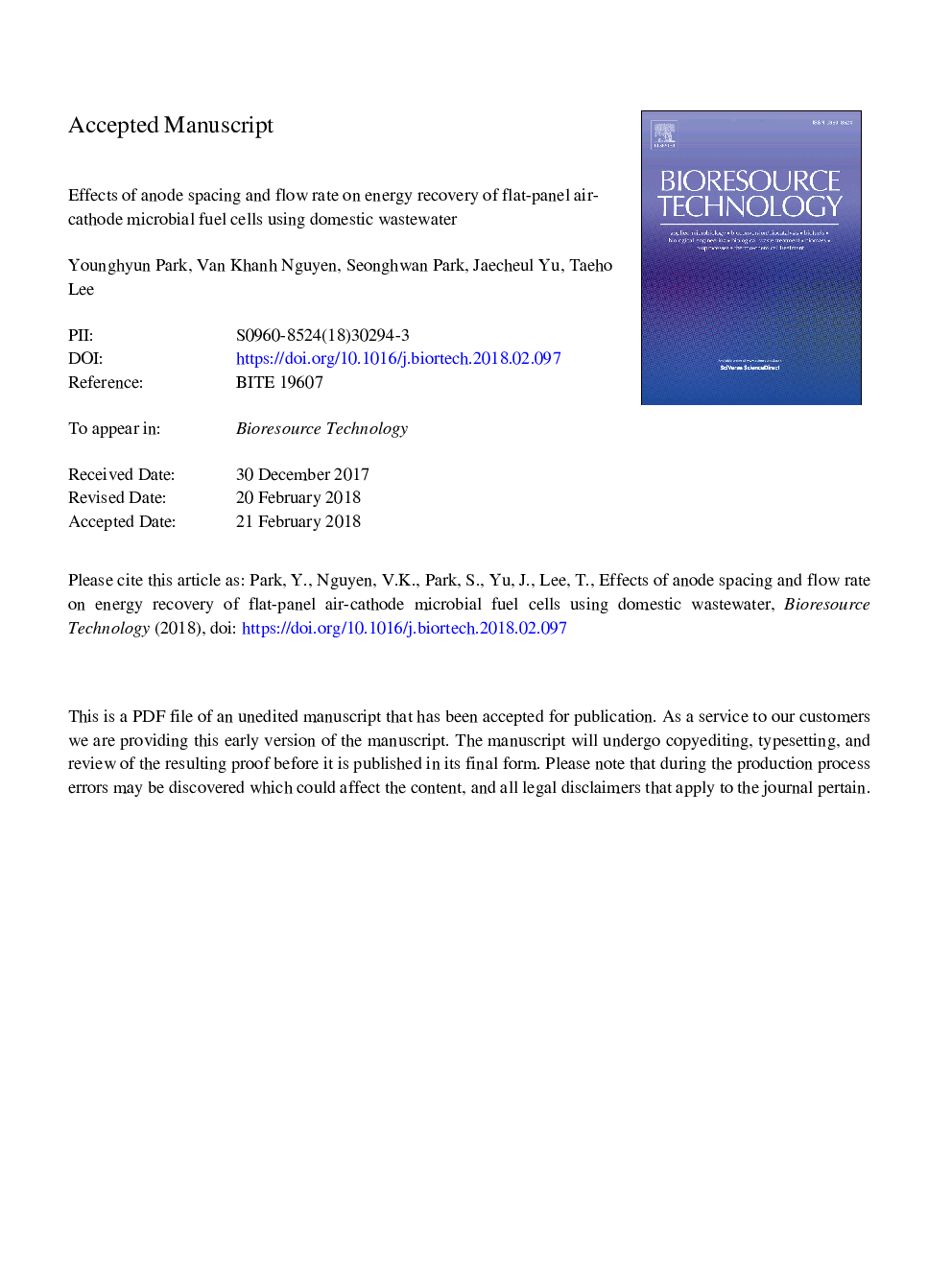| Article ID | Journal | Published Year | Pages | File Type |
|---|---|---|---|---|
| 7067564 | Bioresource Technology | 2018 | 30 Pages |
Abstract
A flat-panel air-cathode microbial fuel cell (FA-MFC) is known to overcome the low conductivity and biodegradability of domestic wastewater. This study evaluated the normalized energy recovery (NER) based on the volume of wastewater treated (NERV) and chemical oxygen demand (COD) removal (NERCOD) using FA-MFCs with three anode spacing conditions and different flow rates (within a hydraulic retention time of 30â¯min). Generation of current was similar (11.7â¯Â±â¯0.5â¯mA) at different spacings; however, COD removal was affected by the flow rates. The NERV for both acetate and domestic wastewater showed good agreements with the flow rates in all anode spacing conditions. The NERCOD results were negatively correlated with the COD removal rates, independent of the anode spacing. The FA-MFCs yielded an NERCOD of 0.22â¯kWh/kg-COD from extremely low-strength domestic wastewater (150â¯mg-COD/L). The FA-MFC has a significant potential as an energy-sustainable wastewater treatment technology.
Keywords
Related Topics
Physical Sciences and Engineering
Chemical Engineering
Process Chemistry and Technology
Authors
Younghyun Park, Van Khanh Nguyen, Seonghwan Park, Jaecheul Yu, Taeho Lee,
